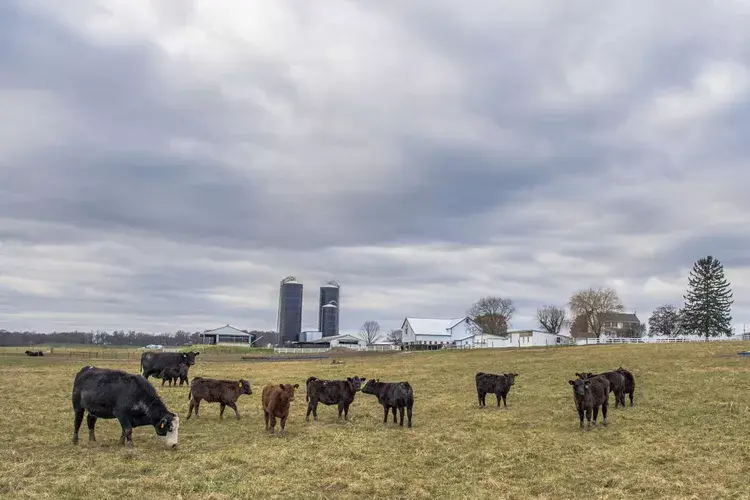The $11 billion Farmer Bridge Assistance Program from the USDA is likely to change next year’s...
Strong Livestock Revenue Slows Decline in U.S. Farm Income

Farm income is down in 2024 for the second year in a row, with receipts from corn and soybeans — the two largest field crops — off by a combined $23.5 billion from 2023 levels. But higher than expected livestock revenue is a counterweight, according to the USDA. It estimated net farm income, a broad measure of profits, at $140.7 billion this year, down by $6 billion from last year but still the fourth-highest level on record.
Production expenses, for goods such as livestock feed, fertilizer, and pesticides, are falling for the first time since 2019, allowing farmers and ranchers to keep some cash in their pocketbooks.
“The aggregate figure masks very different stories — it’s a much brighter picture for cattle producers than row-crop producers,” said Pat Westhoff, head of the think tank Food and Agricultural Policy Research Institute.
Senior Republican lawmakers said Congress should provide substantial aid to farmers to offset lower income. “Immediate action is required to stabilize the farm economy and prevent a crisis that will only become more costly to address over time,” said House Agriculture chairman Glenn Thompson and Senator John Boozman, in line to become Senate Agriculture chairman in January.
The USDA said crop receipts would be $25 billion lower than last year, with lower market prices for corn and soybeans accounting for much of the decline, while livestock receipts would be $21 billion higher, thanks to higher revenue from cattle, eggs, milk, broiler chickens, and hogs. Production costs would be $12 billion lower, but government payments would be smaller too, as would farm-related income from sources such as rent and hunting fees. In the end, net income would fall by 4% from 2023.
Net farm income was a record $181.9 billion in 2022, when Russia’s invasion of Ukraine drove up commodity prices and when farmers received nearly $16 billion in government payments. The 10-year average for net farm income is $105 billion.
Although farm income would fall this year, the farm sector balance sheet would improve, said USDA economist Carrie Litkowski. Farm equity is increasing because assets, chiefly land and buildings, are rising in value more rapidly than is debt. The debt-to-asset ratio, a commonly watched indicator of farm financial strength, would fall to 12.86% this year, the fourth year in a row of improvement.
“It isn’t uncommon” for equity to increase in the same year that income falls, said Litkowski during a USDA webinar. “A one- or two-year decline in income isn’t necessarily going to affect the value of farmland and buildings.”
Compared to a September estimate, the USDA farm income forecast was $700 million higher. “The livestock sector is doing marginally better, the crop side marginally worse,” said former USDA chief economist Joe Glauber. Farm debt was low, and farmland was holding its value. “Equipment purchases seem to be down a bit…. When prices fall and input costs rise, farmers are tighter with their spending.”
Median total farm household income, which includes off-farm earnings, was forecast at $100,634 this year, an increase of 2.7%. For commercial farms, a group that includes full-time farmers and large operations, median total household income was pegged at $229,119, a drop of nearly 12% in one year.
EDITOR’S TAKE:
The tale of two very different ag sectors for 2024. Crops, particularly corn and soybeans, are suffering from lower prices and demand. On the other hand, livestock farmers/ranchers are experiencing increased prices and income prospects. Lower input costs are helping both sectors. Also, the fact that land values and the value of other assets, such as buildings, are higher, the net effect on a macro basis, is negligible. Thus, if you are targeting crop farmers in your area it might be wise to emphasize the value of AgPack®. With up to $40,000 in exclusive rebates and discounts, AgPack® will allow them to reduce operating costs. For livestock farmers/ranchers, be sure to focus more on IRS Section 179 as a way to help reduce their tax burden.








